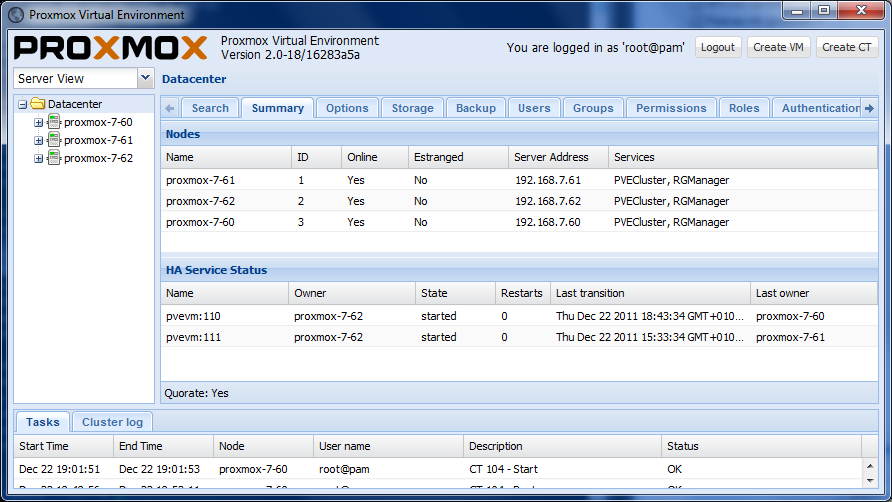Two-Node High Availability Cluster: Difference between revisions
Jump to navigation
Jump to search
No edit summary |
|||
| Line 1: | Line 1: | ||
[[Category:HOWTO]] | [[Category:HOWTO]] | ||
This is a work in progress, stay tuned! | {{Note|This is a work in progress, stay tuned!}} | ||
{{Note|Article about Proxmox VE 2.0 beta}} | |||
=Introduction= | |||
Proxmox VE High Availability Cluster (Proxmox VE HA Cluster) enables the definition of high available virtual machines. In simple words, if a virtual machine (VM) is configured as HA and the physical host fails, the VM is automatically restarted on one of the remaining Proxmox VE Cluster nodes. | |||
The Proxmox VE HA Cluster is based on proofed Linux HA technologies, providing stable and reliable HA service. | |||
[[Image:Screen-HA-status.png|Screen-HA-status]] | |||
==Update to the latest version== | |||
Revision as of 15:01, 18 January 2012
| Note: This is a work in progress, stay tuned! |
| Note: Article about Proxmox VE 2.0 beta |
Introduction
Proxmox VE High Availability Cluster (Proxmox VE HA Cluster) enables the definition of high available virtual machines. In simple words, if a virtual machine (VM) is configured as HA and the physical host fails, the VM is automatically restarted on one of the remaining Proxmox VE Cluster nodes.
The Proxmox VE HA Cluster is based on proofed Linux HA technologies, providing stable and reliable HA service.
